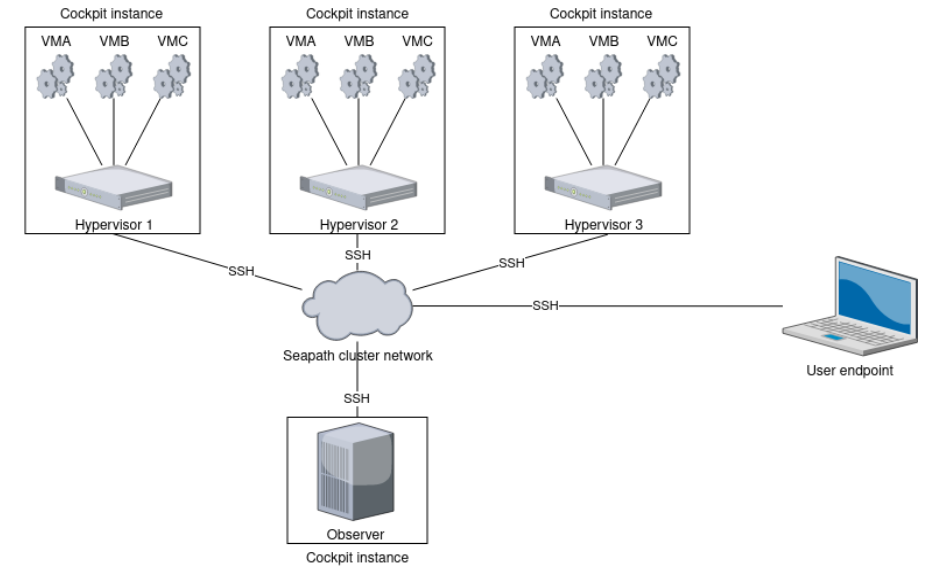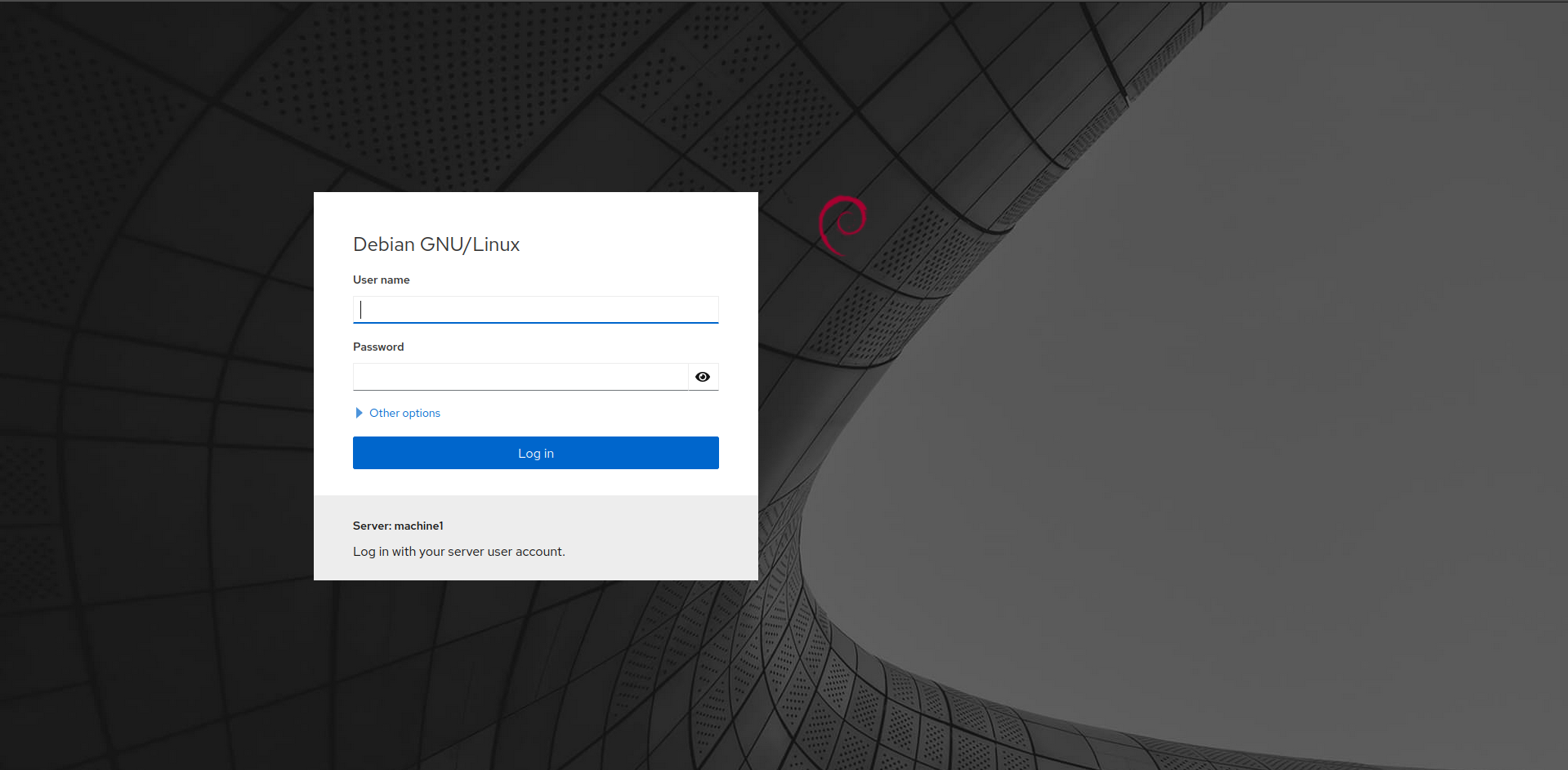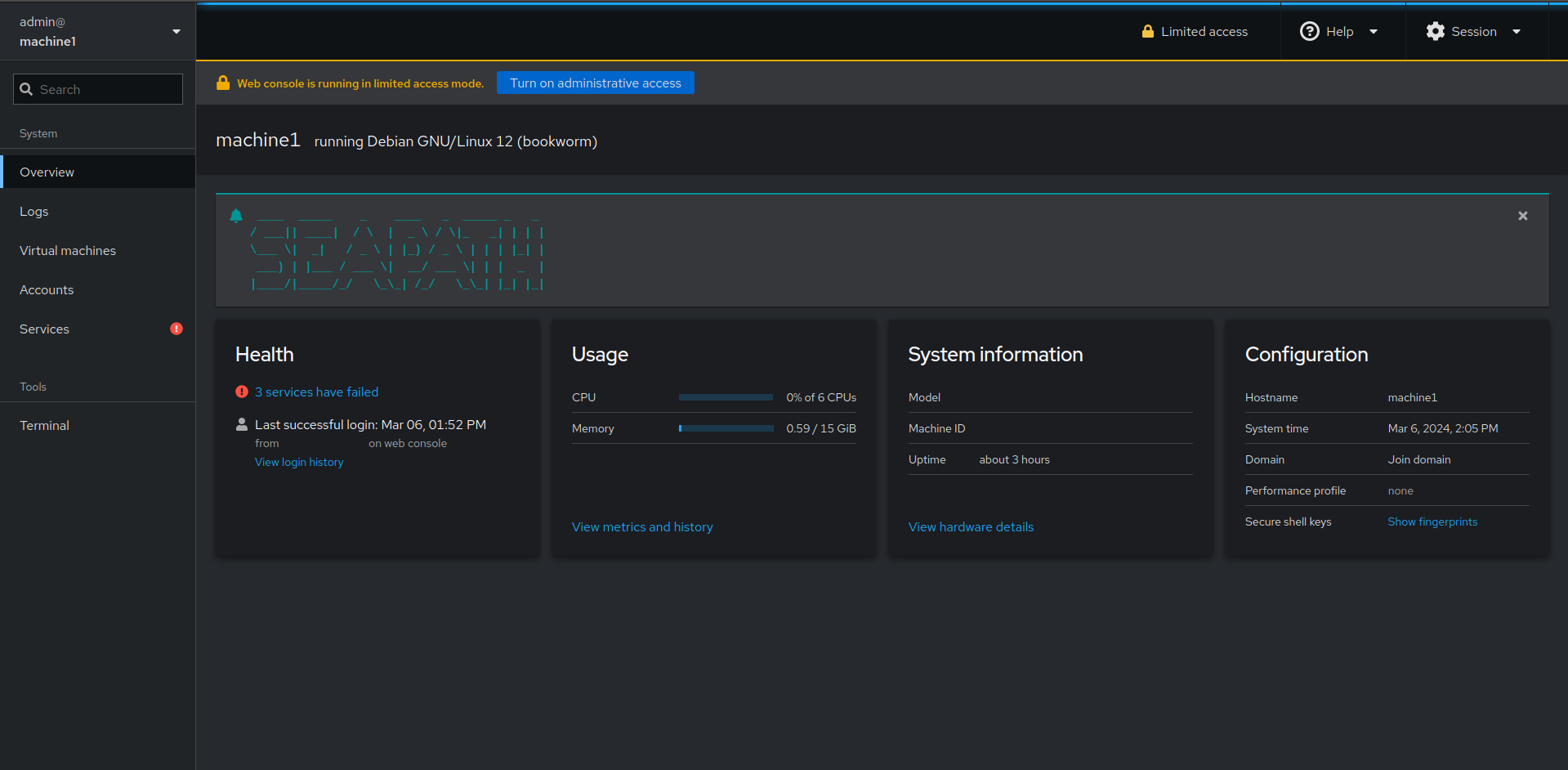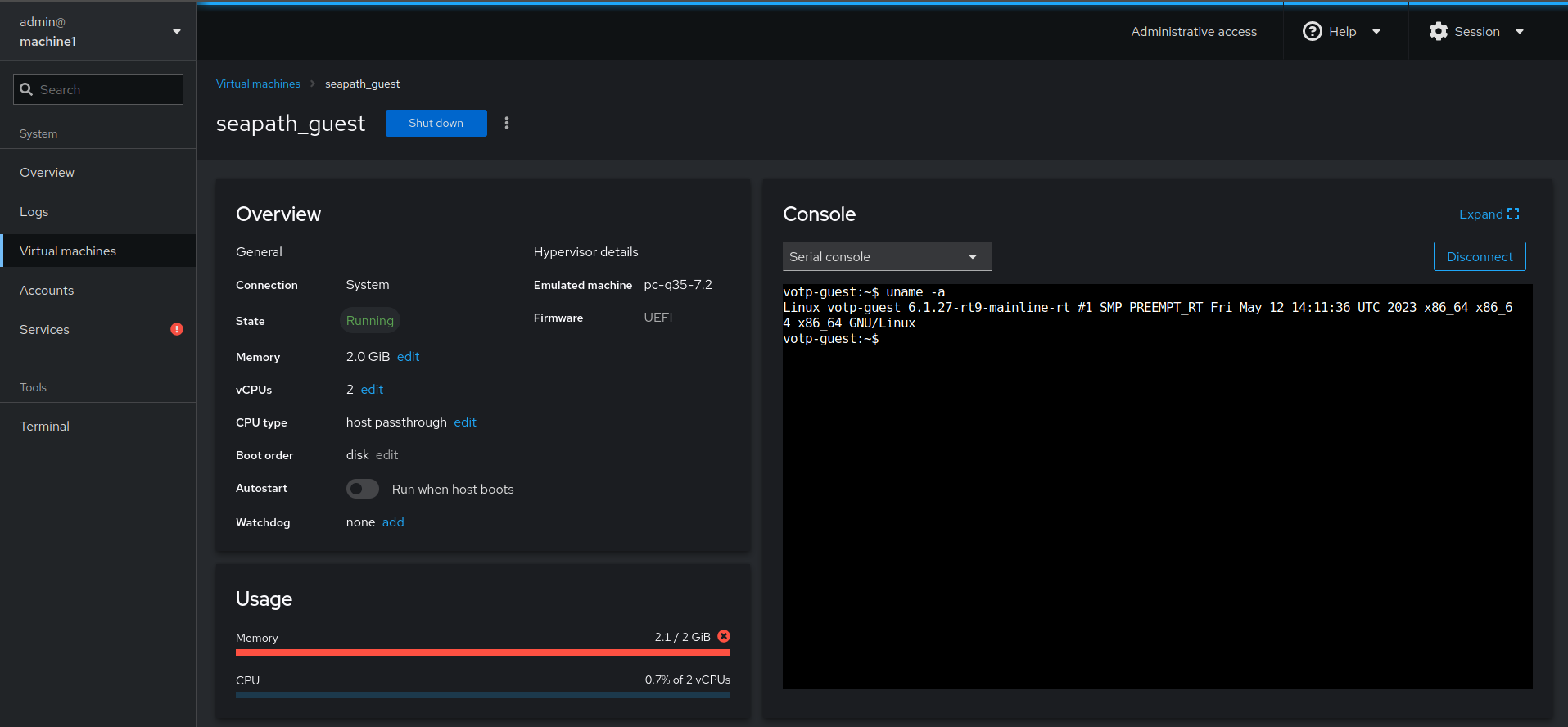Seapath is designed to be used shell based terminal and don’t provide any graphical or modern graphical desktop environment such as Gnome/KDE. However, it is possible to manage a cluster using a web UI interface, such as Cockpit.
What is Cockpit?
Cockpit is a web-based graphical interface designed to make server administration easier. It is capable, for example, in a fancy interface to:
Inspect server logs
Start containers and virtual machines
Configure networks
Access terminal
Etc
The project is supported by RedHat, and is an active repository with 20K commits since 2013. It provides also a plugin system used to extend Cockpit functionalities.
Cockpit is packaged on both Yocto and Debian.
For plugins hosted on a different repository from the main Cockpit repository, some of them are not yet packaged in Yocto (such as cockpit-machines plugin).
Finally, note that Cockpit is not designed for massive deployment/configuration like Ansible does.
Why using Cockpit in Seapath
Debugging each machine in a Seapath cluster can be tricky. Each machine is only accessible though CLI, and some tools used are not that simple to use (Libvirt, Ceph, etc.). Cockpit offers a way to simplify the use of Seapath by gathering all the administration and the monitoring in one place, for all cluster machines.
Keep in mind that Cockpit is an optional feature, and is a graphical abstraction of a shell based CLI. Everything that can be done in Cockpit can be achieve in a CLI.
How does it work?
Cockpit is designed along a client/server schema. When using it on Seapath, one Cockpit instance is installed and running on each cluster machine. Cockpit used in back-end SSH protocol to dial with client and between each cluster cockpit instance. This implementation makes the use more secure, as Cockpit authentication inherits SSH and users configuration deployed on each machine. By doing so, it is easier to give access to Cockpit to only desired users.
Installation
On Seapath Debian
Cockpit is packaged inside ISO image generated by build_debian_iso (https://github.com/seapath/build_debian_iso/blob/main/srv_fai_config/class/99-seapath), and is then installed with APT. Cockpit can be installed by adding the class `SEAPATH_COCKPIT` to the list of classes in used, in `99-seapath` file: https://github.com/seapath/build_debian_iso/blob/main/srv_fai_config/class/99-seapath
On already set up machines it can be installed using apt:
sudo apt install cockpit cockpit-machines
Be careful to not install cockpit-network plugin, as it depend of network-manager package, which is not currently supported in Seapath.
On Seapath Yocto
Cockpit can be installed in Seapath Yocto by adding it to the IMAGE_INSTALL variable corresponding to the image you are building. For example, if you want to install it on host machines, you must add following lines in file sources/meta-seapath/recipes-core/images/seapath-host-common.inc:
IMAGE_INSTALL:append = " \
cockpit \
cockpit-dashboard \
cockpit-ws \
cockpit-bridge \
cockpit-shell \
cockpit-users \
cockpit-systemd \
"
This will install cockpit with the basic functionalities as described as below.
Unlike Seapath Debian, cockpit-machines plugin is currently not available in Seapath Yocto but is planned to be in 2024.
Usage
Once Seapath is installed and configured on a Seapath machine, Cockpit is accessible through the interface connected to your network on the port 9090. It can be accessible in any web browser with the following URL: https://<TARGET_IP>:9090/
You can use the command netstat -tupn to identify the address in use to access to the Cockpit interface.
When connecting directly to a Cockpit instance, you are prompted to log in:
The credentials used to log in are the same as those configured on your Linux system.
By default, for security reason it is not possible to log in using root user.
Once connected, the main menu of Cockpit presents an overview of the machine state:
For a simpler usage, we recommend to use a Cockpit instance hosted on a laptop or a VM, and connect it using Add new host menu entry to connect it to the different Cockpit instance of the Seapath cluster. By doing so, it is possible to gathered all Cockpit instance in one place, and to use one machine as a gateway.
Log inspection
This menu is a graphical abstraction of the journalctl command, and allows you to inspect logs of your machine along different filters (date, priority, etc).
Virtual machines
This menu allows you to manage virtual machines, such as:
Creating a VM image from remote repository (Ubuntu, Fedora, etc), or import it from .qcow2 file
Edit VM configuration (memory, CPU, machine type, network, etc)
Access to VM though VNC or serial connection
Accounts
This menu is used to manage the users of your machine. Among accessible privileges, it is possible to:
Add or delete users
Give new privileges
Force the use of a new password
Etc
Services
This menu is used to manage the systemd services of your system, and offers same uses such as systemctl command.
Terminal
A simple bash terminal.
Cockpit and Cybersecurity
Even if Seapath provides a secure environment, adding Cockpit increase mechanically the attack surface of your system. As already said earlier, Cockpit is a graphical abstraction of the system CLI, and so, inherits from all Cybersecurity rules implemented.
It is important to mention that currently, there is no Cybersecurity hardening configured for Cockpit specifically, but is planned to be in late 2024.
Further works planned for 2024
Add support of Cockpit-machine in Seapath Yocto
Add more specialized Seapath features in Cockpit, such as cluster management or maintenancy
Hardened Cockpit for Cybersecurity



